Indoor flowers are considered one of the main decorations of home decor. There are many bright types of flowers of different shapes, colors and sizes, significantly refreshing the interior. The most spectacular are indoor flowers with red leaves. They attract attention with their rich color and unusual shape. Also, plants with red flowers cannot go unnoticed - they all belong to different species, but they uniquely decorate any room.
Content
Names, descriptions and photos of indoor plants with red leaves
Poinsettia, cordilina, irezine, coleus, aglaonema and royal begonia are considered the most common indoor plants with scarlet leaves. Description and photos will allow you to choose the most suitable plants for any home interior.
Poinsettia or "Christmas Star"
Poinsettia is a bright representative of the family Euphorbia, which attracts attention with its scarlet leaves. The plant acquired its second name “Christmas Star” because it blooms in the winter (December-January). The flower is native to Central America and Mexico. In addition to its beautiful appearance, the plant has healing properties.
Poinsettia has a nondescript white small inflorescence, under which there are large scarlet leaves that give beauty to the appearance of the flower.
Temperature changes adversely affect the flower, so drafts and places near the battery should be avoided. The most comfortable temperature is +18 degrees. Another necessary condition is spraying and rubbing the leaves with warm water. Water the flower as soon as the substrate is completely dry.
Cordilina
Cordilina is a wonderful representative of the tropics, which is called the false palm. Long leaves of large sizes form a thick and lush crown of the flower. After some time, the lower tiers fall, the stalk becomes bare, and the upper part remains. Also, the plant has small flowers that gather in a spike-shaped inflorescence and have a red tint. The upper part of the cordiline is painted in a rich burgundy color, which is why they attract their attention.
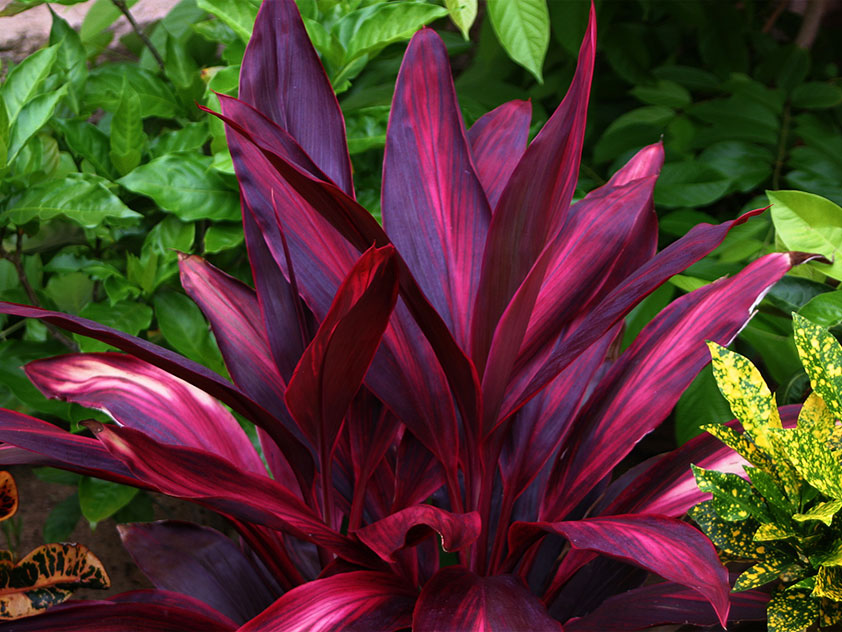
In order for the plant to grow actively, it is necessary to provide it with diffuse lighting, since direct sunlight can leave burns. Watering is carried out when the top layer of the substrate is completely dry. Cordilin needs to be transplanted every spring. Florists also recommend picking up slightly acidic soil for better growth.
Coleus
The main feature of coleus, a flower native to tropical hot countries, is its burgundy leaves, which are framed at the edges by a green strip. Coleus belongs to the family Labiaceae and is distinguished by its unpretentiousness in care. The people call the flower the croton of the poor, as it is very similar to it in its color.
The leaves of the flower have a heart-shaped elongated shape with wavy serrated edges. In different varieties, they can vary in size and shape. Coleus also has small spike-shaped inflorescences, which are formed from small blue flowers.
Coleus is resistant to direct sunlight, however, in the summer, the flower requires constant plentiful watering.The flower does not tolerate heat, so in summer it is recommended to constantly ventilate and spray the coleus with cool water.
Aglaonema
Aglaonema is a perennial herb that prefers to grow on the banks of rivers in the shade. The aglaonema will grow to 80 cm in height and has a short, but fleshy and wide stem. On it are alternately arranged leaves on long petioles. They can reach 10-15 cm in length and have an elongated oval shape. The main distinguishing feature of this species are leaves that have a green color in different shades with bright pink veins.
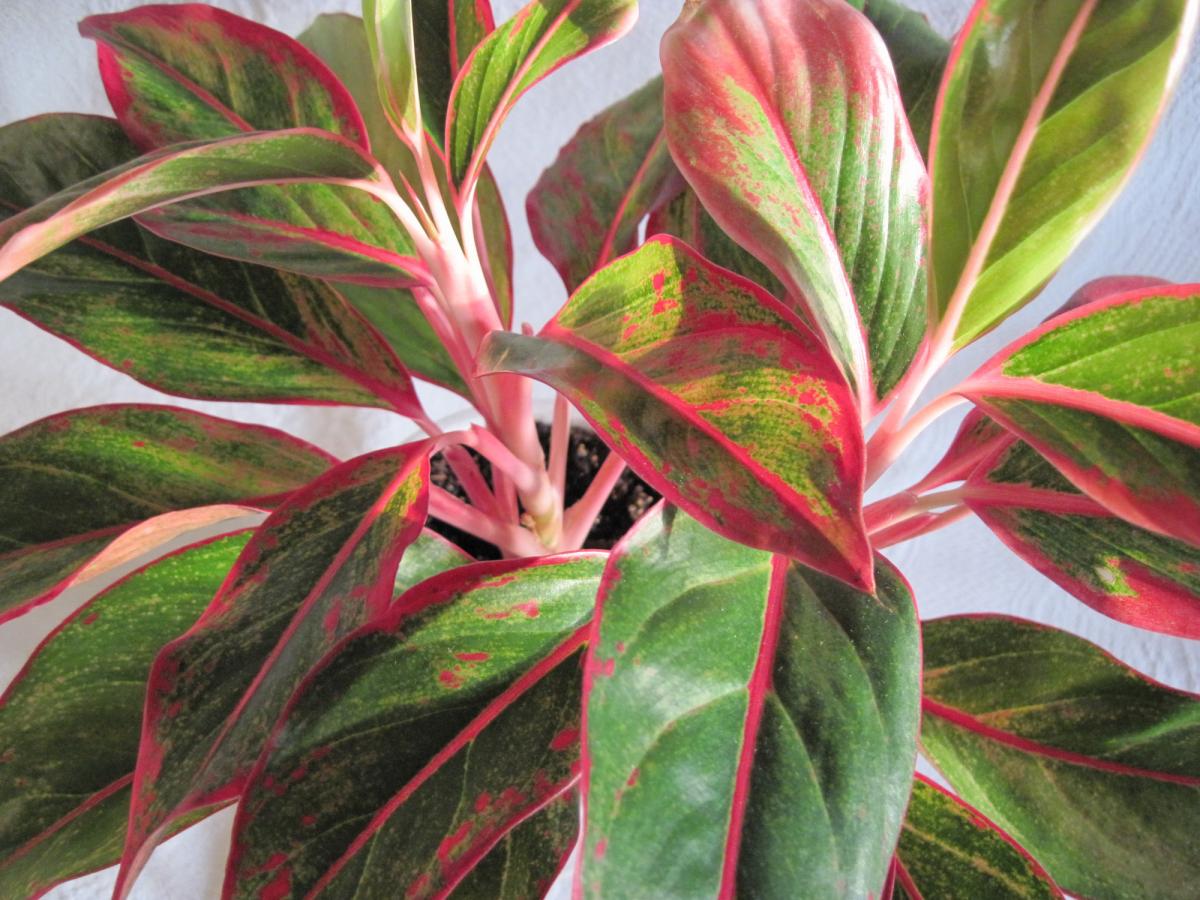
Experienced flower growers recommend paying attention to the temperature regime for the flower. So, in winter, the aglaonema prefers to grow in a room with a temperature of + 20-24 degrees, and in winter the temperature should average +17 degrees. In summer, the flower requires frequent watering, which is reduced to 2-3 times a week in winter. Aglaonema is constantly sprayed and wiped with warm water.
Royal begonia
Begonia, which was called royal, is famous for its lush large leaves, the shape of which depends on the variety. Formed flowering plant does not have. Leaves with a red core and a strip on the border. The rest is green or pale pink.
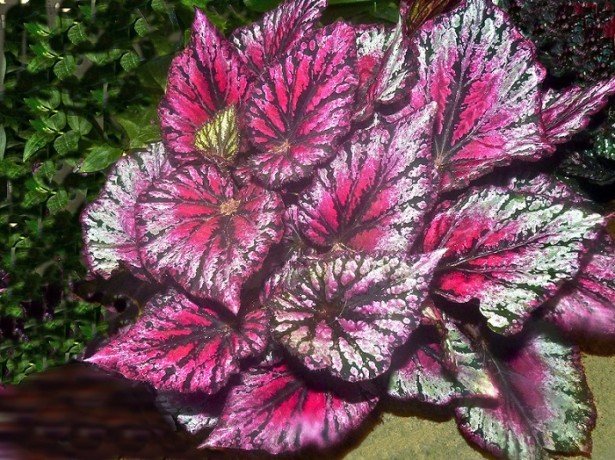
Begonia does not like spraying and moisturizing, as dark spots instantly appear on the leaves. Experts recommend maintaining a temperature of + 20-24 degrees and high humidity in the room. Also, low temperatures and streams of cold air adversely affect the plant, it can even fade. It is recommended that begonias provide diffused light, as direct rays can leave burns.
Irezine
Iresine is a plant from the Amaranth family, native to Australia and America. It can be woody, bushy or grassy in shape. The branches of woody and curved rubber trees. Leaves have an oval elongated shape with wavy serrated edges. Small flowers are collected in spike-shaped inflorescences. Their flowering is overshadowed by leaves, the color of which may be burgundy, while the veins are pale pink.
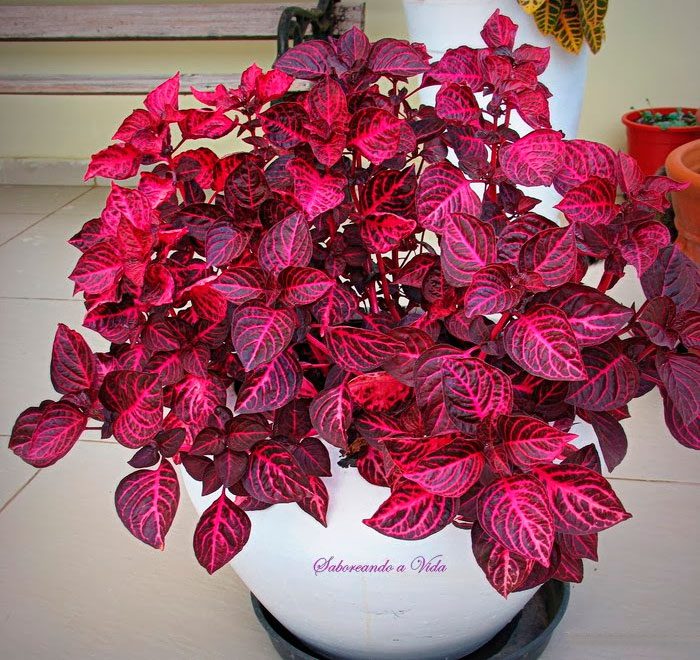
You can grow rubber tires both in the room and on the street. Direct sunlight can cause burn spots, so it is recommended that the flower be diffused. Also, tires are unpretentious to the temperature regime and humidity in the room.
Caladium
Caladium belongs to the Aroid family, and is also called elephant ears and the heart of Christ. This is due to large leaves of saturated color with a green border. Leaves can grow up to 25-30 cm. The flowers are small, inconspicuous white with a green tint, form only cobs.
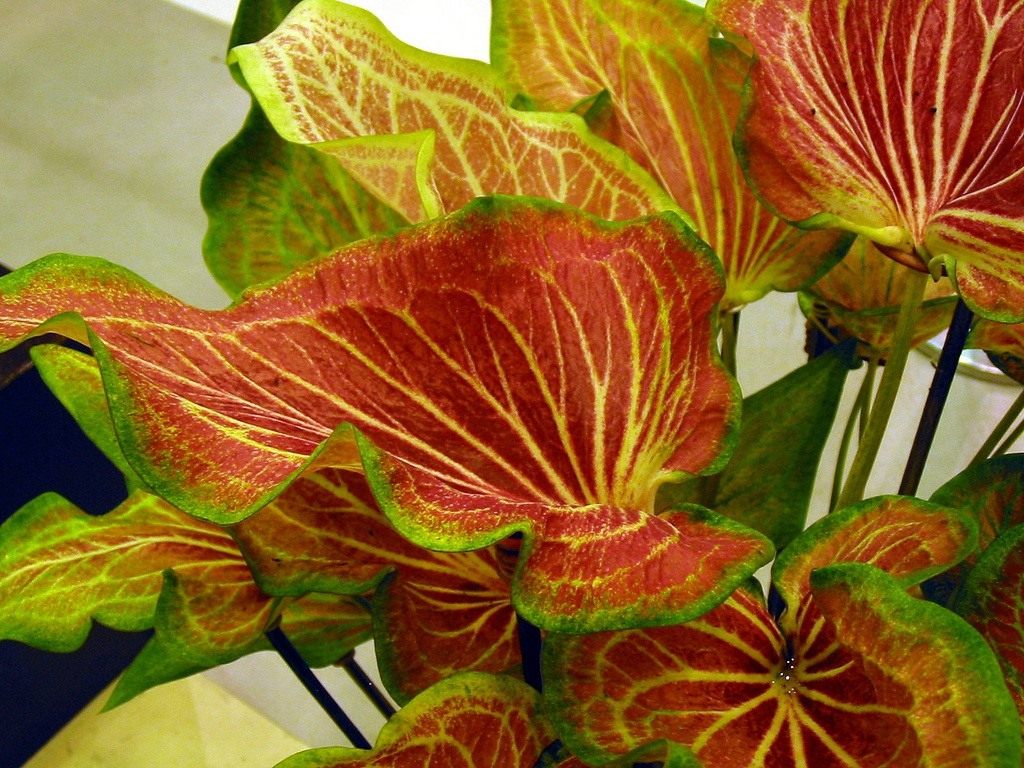
Experts recommend placing the plant on northwest windows in order to provide diffuse lighting. The temperature should not fall below +15 degrees, and the optimum temperature is considered to be + 22-24 degrees. It is also necessary to ensure a high coefficient of humidity in the room, for this the pot is placed on a stand with moss.
Home plants with red flowers
No less beautiful are home plants with red flowers. They fit perfectly and become the "highlight" of any interior. Bright color is able to give vitality and create a festive atmosphere in the house.
Hibiscus chinese
Chinese hibiscus is a common evergreen plant that grows in the form of a bush and reaches 3 m in height. The flower has elongated leaves of deep green color with wavy serrated edges. The flowers are large, bright red, funnel-shaped. In the core there is a long stamen with yellow pollen.In place of the flower, a box with seeds is formed. Flowering lasts from early spring to October.
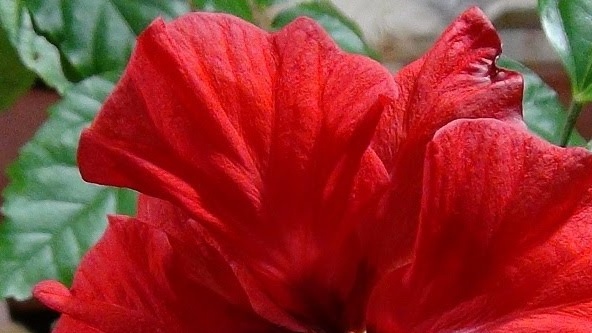
Florists recommend placing the hibiscus pot in well-lit areas. The temperature in the room should be + 20-23 degrees. Avoid drafts. Hibiscus flowers make hibiscus tea.
Hippeastrum
One cannot but pay attention to the large red inflorescences of the bulbous hippeastrum. The flower has massive elongated leaves that grow to 45-50 cm and have a dark green color. The bulb releases arrows, at the ends of which buds appear.
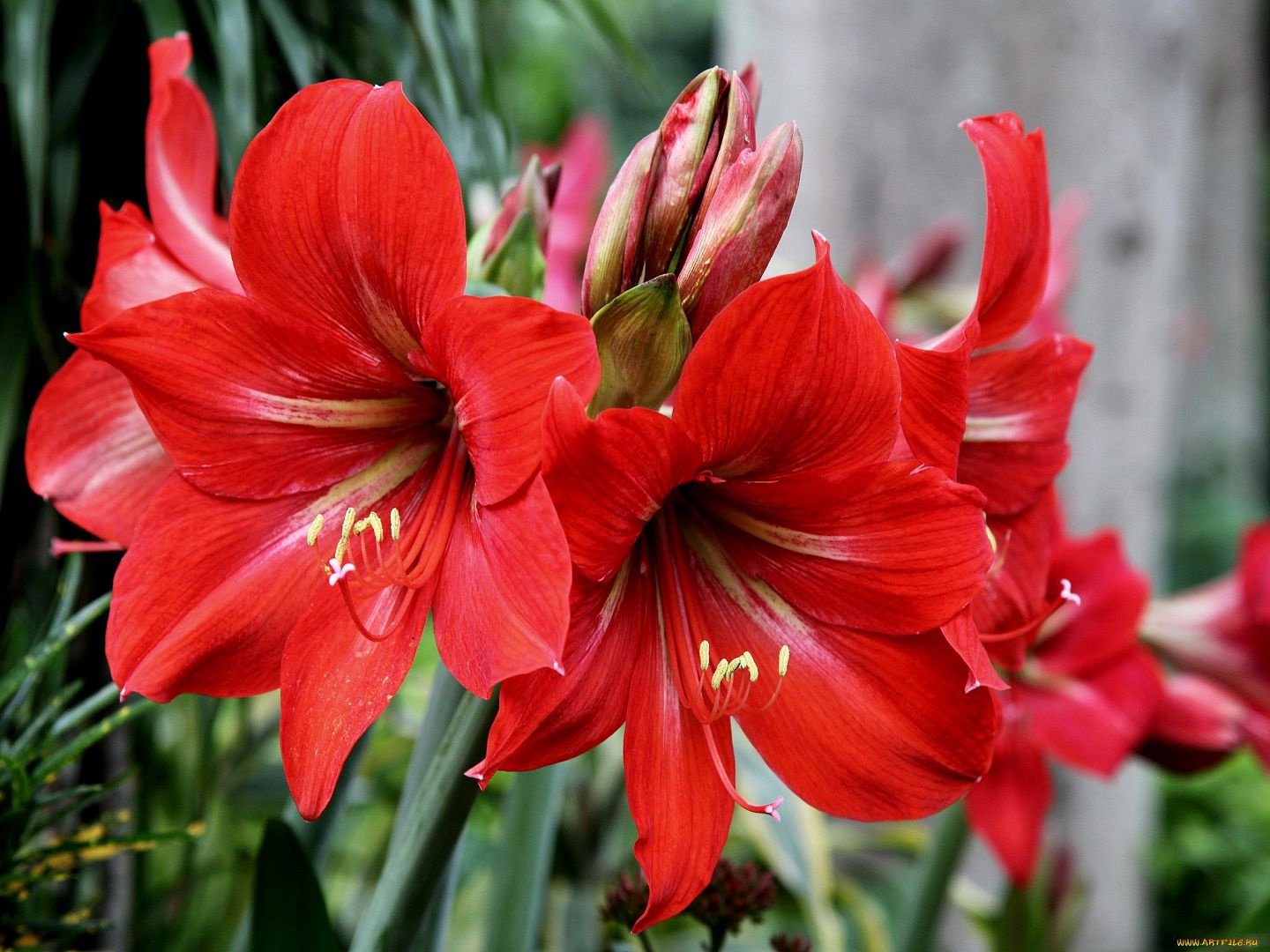
Hippeastrum flowers reach 20-25 cm in diameter and have a funnel shape. The plant blooms buds in the spring and winter.
Pentas lanceolate
Pentas is a hybrid adapted to houseplants that looks like a bush. The leaves of the flower are small, up to 7 cm in length. A special feature of the pentas are small flowers in the form of stars, which are collected in lush inflorescences of umbrellas. The plant blooms from spring to early autumn.
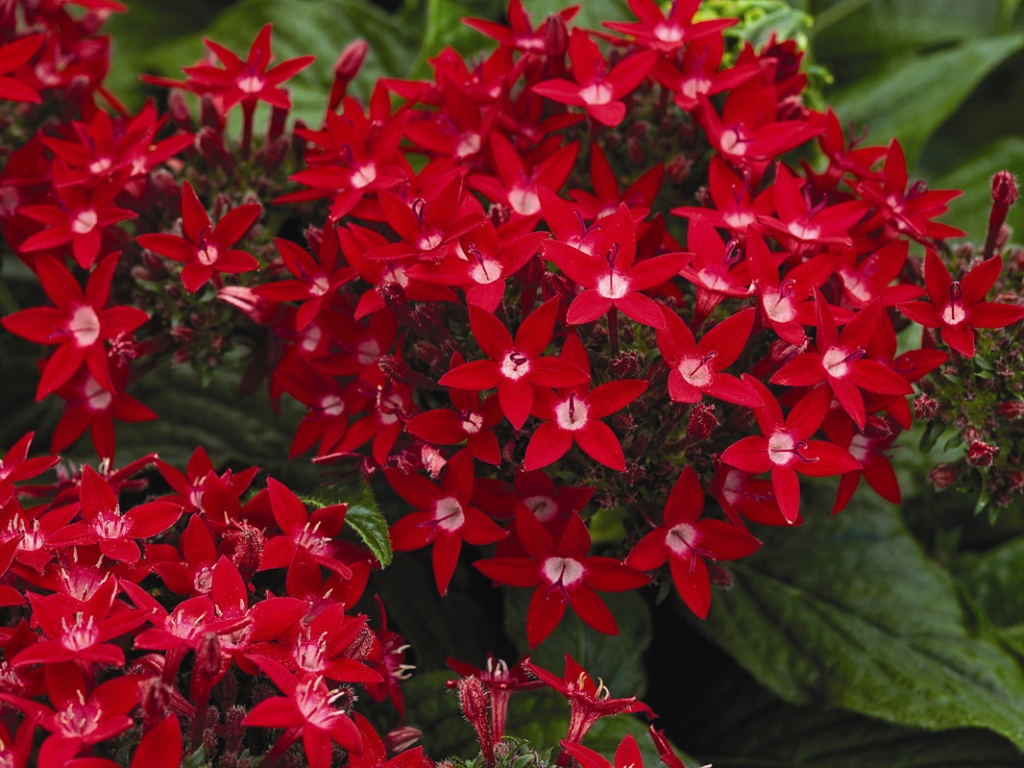
Florists focus on the fact that pentas is a photophilous plant and tolerates direct lighting well. Also, for its maintenance, it is necessary to maintain a temperature of + 20-25 degrees. This hygrophilous plant is not afraid of the flow of cold air in the summer, so you can put it anywhere. The tops of the flower often pinch, as they are stretched and exposed. The pruning procedure is carried out between flowering periods, leaving a bush 40-50 cm high.
Gusmania
The inflorescence of evergreen bushy gusmania consists of small white flowers that are surrounded by a large number of red leaves that are located on the peduncle. Flowering lasts from spring to early winter.
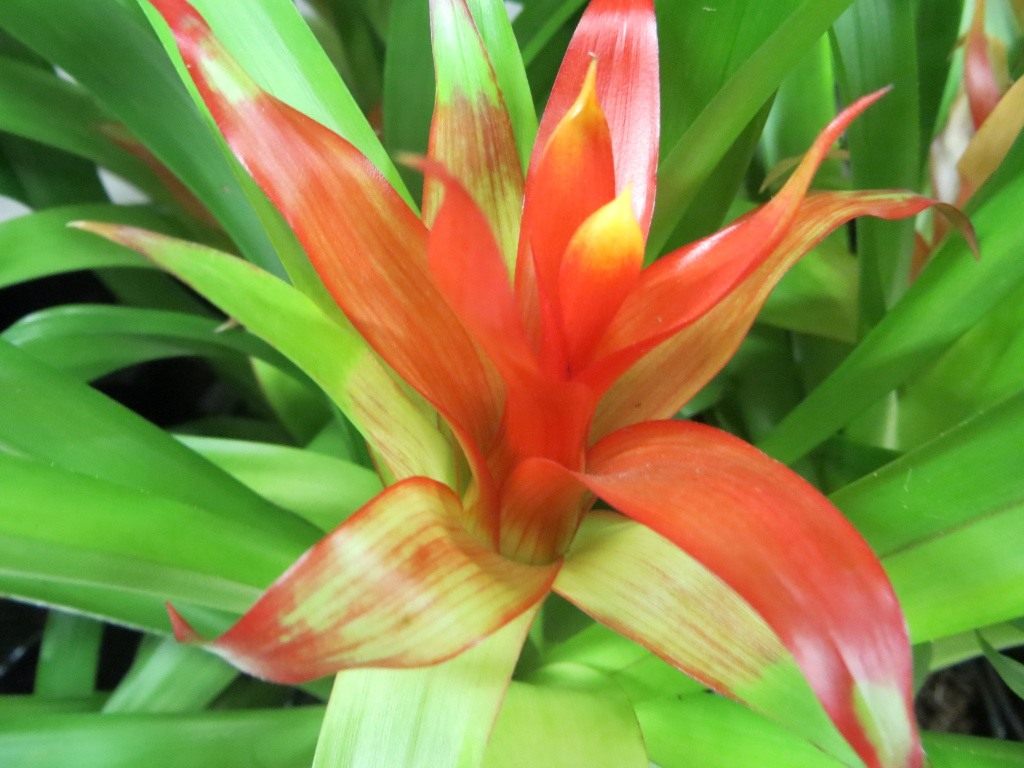
Gusmania refers to shade-tolerant and heat-loving flowers and requires abundant watering, which is carried out in sockets. It is necessary to pay attention to the fact that excessive watering can provoke decay of the root system and death of the plant.
Azalea
Azalea is a small flower, up to half a meter in height, which has a highly branching crown. The leaves are small, with a smooth glossy surface, dark green in color. Flowers can be simple, terry or wavy, and in diameter reach 5-7 cm. Flowering can be observed from mid-January to the end of April.
The temperature of the azalea content should not exceed +15 degrees, and the lighting must be diffused in order to protect the flower from burns. Another important condition is a high coefficient of humidity in the room and constant ventilation of the room.
Diplomacy
Dipladenia is distinguished by its flexible and curly stem. Flowers have a tubular base that expands at the end and becomes divided petals. The plant blooms from late spring to October.
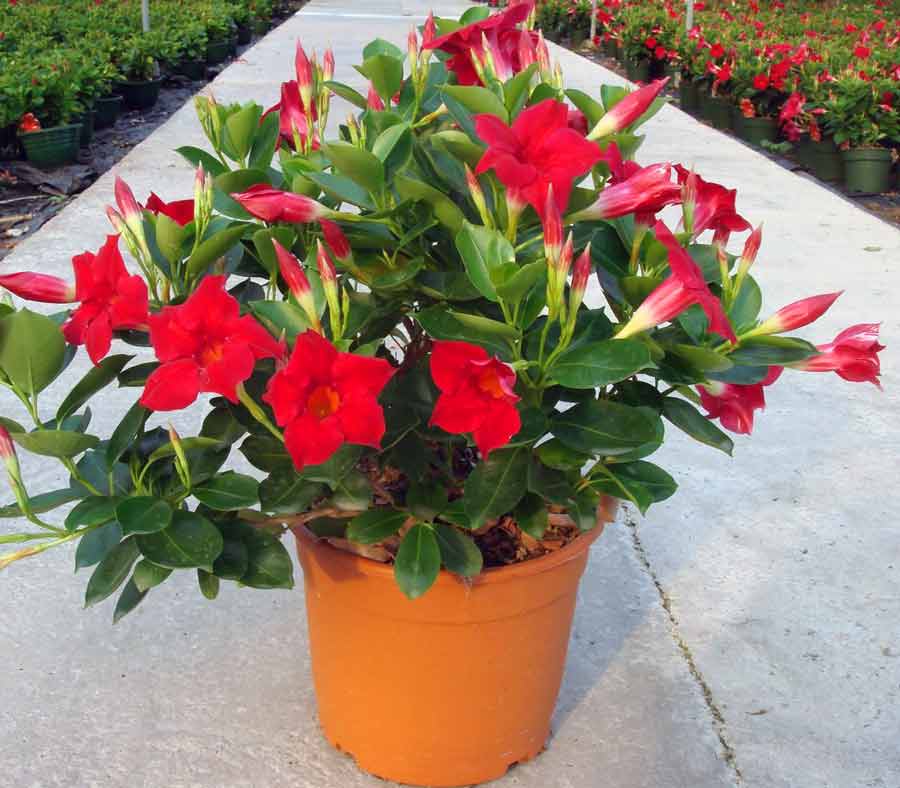
It is thermophilic, therefore it is necessary for her to provide a temperature of + 23-24 degrees in the room. Also, the flower loves a large amount of light and plentiful watering. Experts do not recommend putting the pot in drafts, as they negatively affect the growth of the flower. Dipladenia has a juice that is poisonous to humans, so transplantation must be done with gloves.
Vallota
Vallota refers to bulbous perennials. Has large xiphoid leaves, reaching 60 cm in length, and a rich purple color.From the bulb grows a peduncle 40-45 cm in height, on which an umbrella-shaped inflorescence is formed from large red flowers of a funnel-shaped shape with stamens in the center. Vallota can bloom twice a year - in late spring and early autumn.
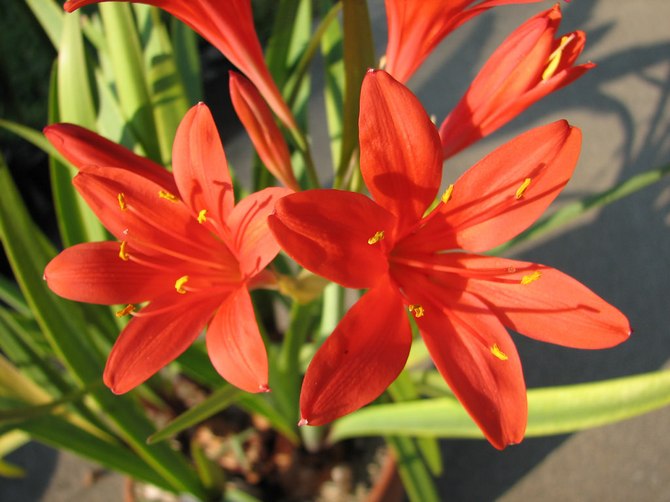
Vallota needs to provide a large amount of sunlight with mandatory shading for lunch, as well as a room temperature of +23 degrees. Watering should be carried out sparingly, as the top layer of the substrate dries. Vallota is poisonous, so gloves must be used when transplanting.
Flowers with red leaves in the interior decoration
Unlike the usual green plants, varieties with red leaves stand out from the general background. First of all, when choosing a flower, it is recommended to pay attention to whether it will be possible to provide him with all the necessary conditions for growing.
After that, it is worth considering the location of the pot. So, it is best to put such flowers in rooms with calm shades of walls to create contrast. Many flowers with red leaves do not require painstaking care and get along well with other ornamental plants.
Common questions
Plants with unusual warm shades of leaves from bright red to pink were first cultivated in hot countries and only then became widespread around the world. Plants with a red color will be an excellent complement to the interior of any home while maintaining the necessary conditions and a favorable location.

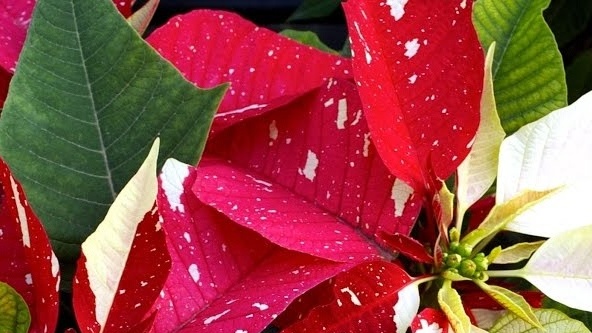
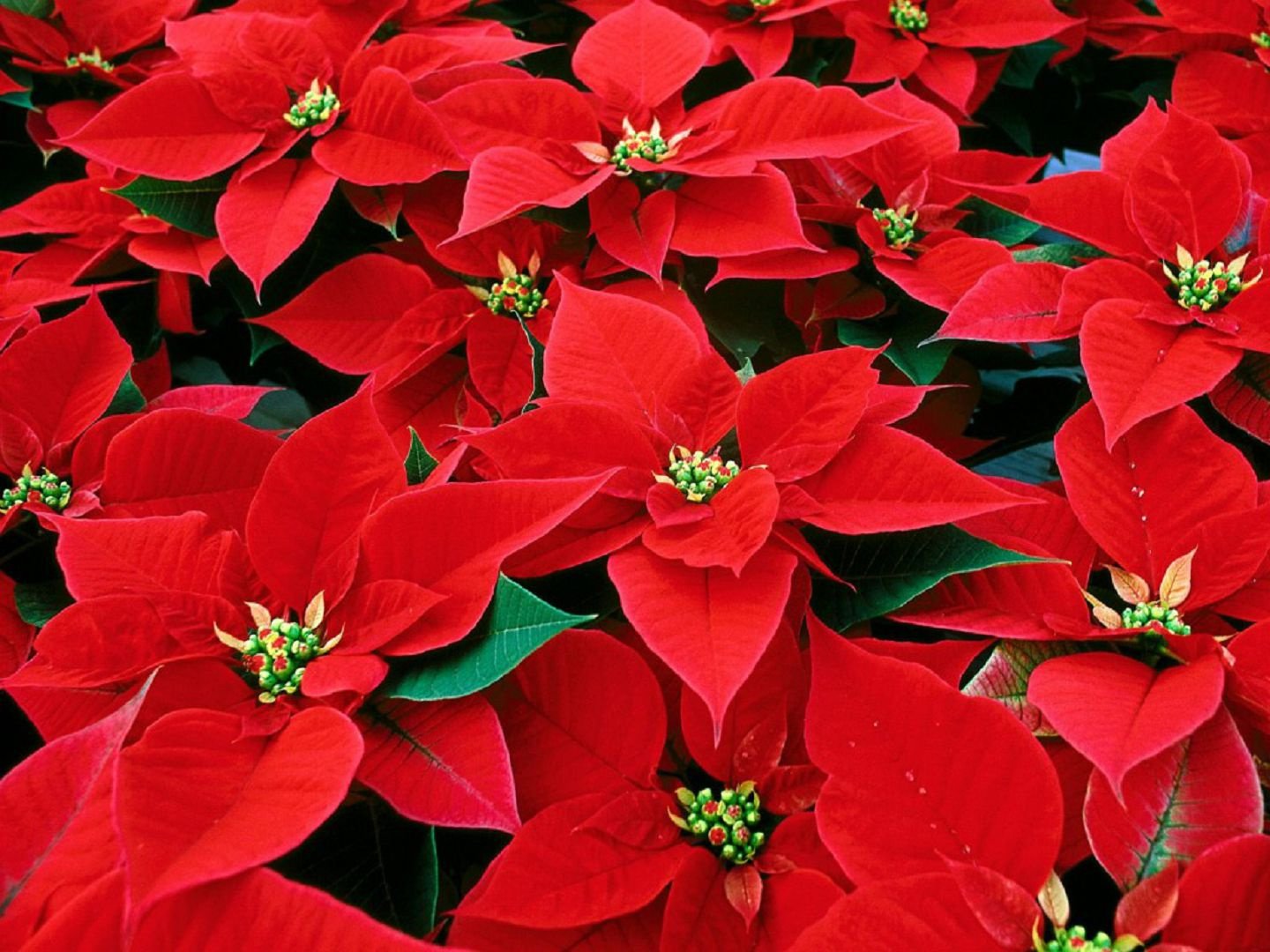
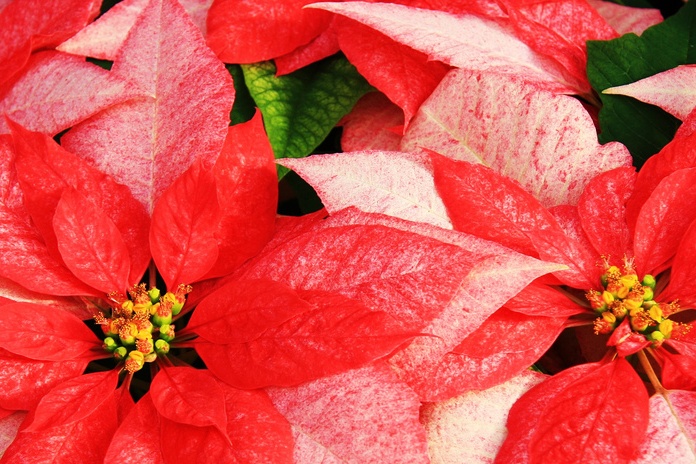
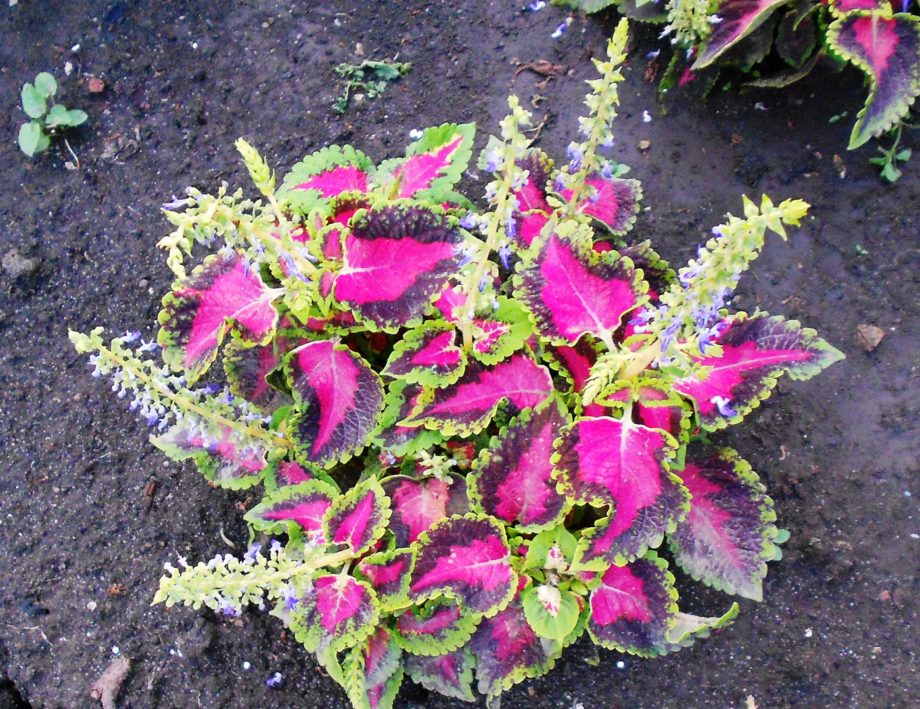
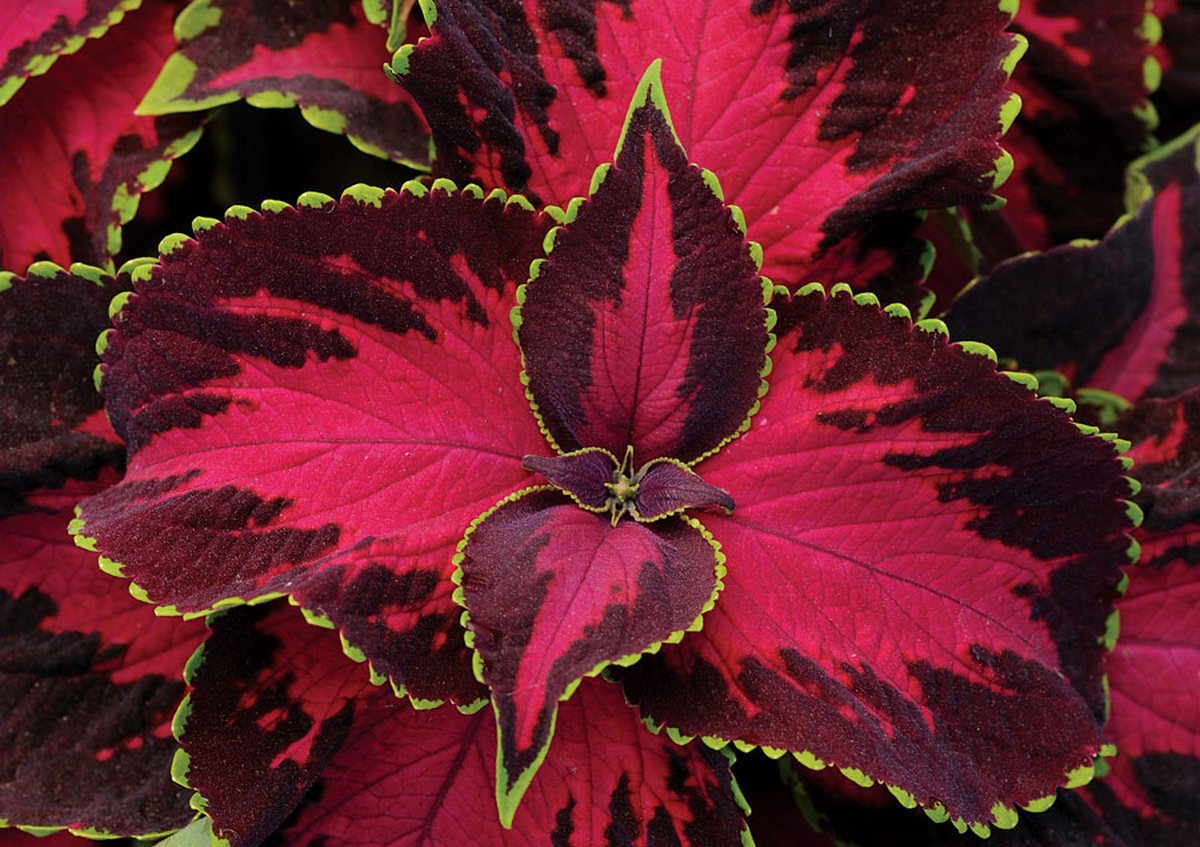



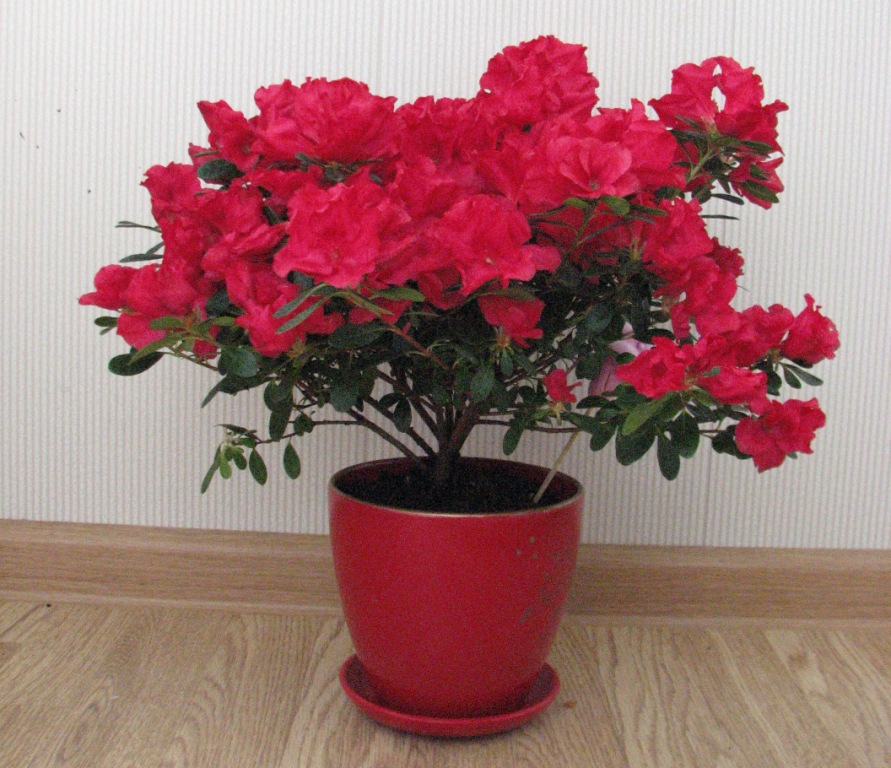
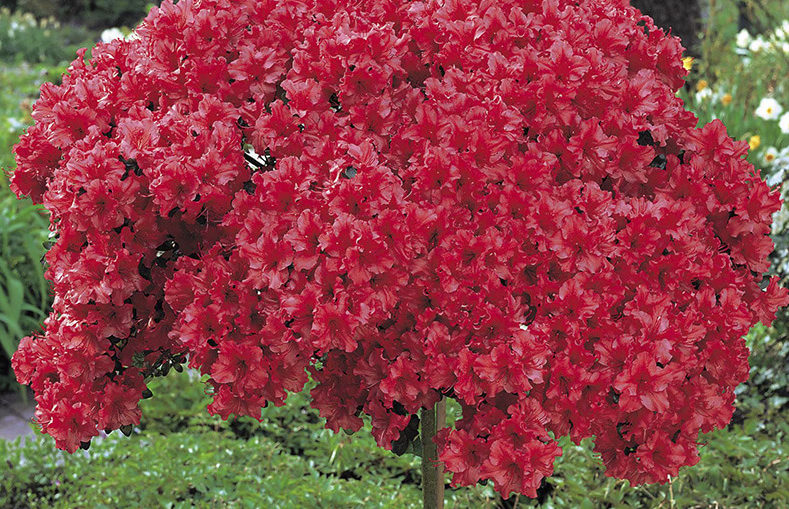
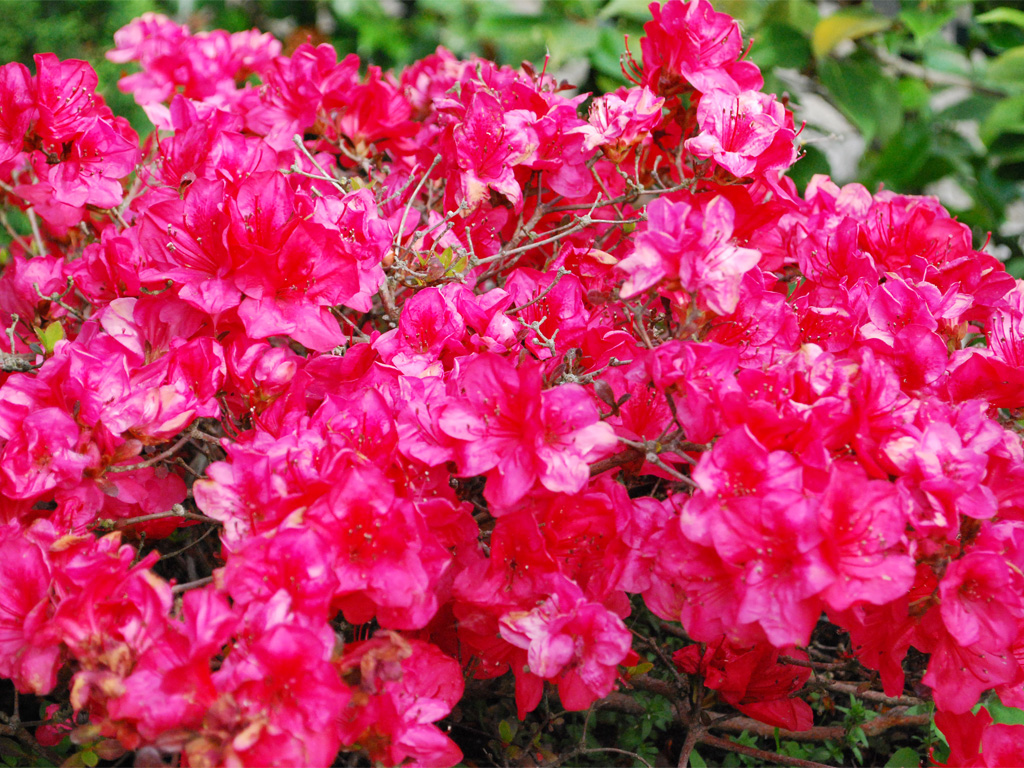
 10 beautiful annuals that bloom all summer
10 beautiful annuals that bloom all summer Sow in the ground, without seedlings: 10 beautiful and unpretentious flowers
Sow in the ground, without seedlings: 10 beautiful and unpretentious flowers Platicodon planting and outdoor care
Platicodon planting and outdoor care Hosta - planting and care in the open ground in the Urals
Hosta - planting and care in the open ground in the Urals